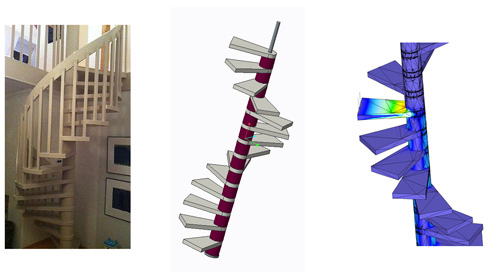- Ah. Awesome then.
Hmm..
To be honest the relationship between Te & Fi is something I have not mapped out properly yet. But I can share some thoughts on Ti and Fe? Agreed. The metaphor I used for the perception functions does not apply to the discernment functions..
The theme of the perception functions is Navigation.
The theme of the discernment functions is Principle.
Navigation: Map + Traveler
Principle:
Balance +
Execution
The former is
fluid, stream-like. That is to say, your perception is something that you absorb without much conscious thought or intent. Images, feels, senses and data synthesizes itself in your mind as situations unravel around you. The formation of Ni's Fractal Map occurs in realtime as new data is taken in or old data re-pondered, altering, shaping the map constantly. The same applies To Si's Map with the aide of Ne's brainstorming.
The latter is
static, stone-like. The judging functions don't flow. They are deliberate and operate with conscious direction. They are discriminating functions, primarily motivated in extracting from the data presented by the perception functions - an axiom/principle of truth (whether moral or logical) to stand upon.
A note on Pi and Pe
Ti & Fi operate as balance-scales. They do the calibration of the pile of data, sorting it into one scale or the other, depending on what principle is being used as the criteria. A finely calibrated Ti/Fi scale will have a 51/49 quality to it that allows it to make the right decision given a difficult set of options when others may not see it.
Te & Fe are executive functions, meaning once the Ti/Fi verdict is called, they are the ones who handle the practical aspect: What Shall Be Done About This.
Logos & Ethos
I dislike the words Thinking and Feeling. There is a hell of a lot of thinking in feeling functions, and there is feeling in the thinking functions. And Logic vs Values still doesn't work because there are Values in Logic, and there is Logic in Values.
The dichotomy can be much better defined as Logos & Ethos, which are merely two alternate philosophies of
Reason. Equally valid, but different approaches to making judgments.
Note on the why of the pairings
I actually don't understand perfectly why they are paired as they are. However, I understand how Ti & Fe collaborate in myself and create a balance that is extremely useful.
This is just a hypothesis, but I suspect that if an individual had both Ti & Te at the expense of any ethic function, the deductions they'd come to would (ironically) be illogical. This is because lacking the human element from the equation creates a reasoning that is unrealistic.
A large part of the causality of our world involves the causality of human dynamics. A Ti-Te individual would be completely blind to all of those dynamics. Such an individual would be utterly confounded by these creatures they cannot predict or understand because they'd have no knowledge into their inner hearts/workings.
As practical and efficient as their plans would seem to them, they'd only be useful with non-living things. As soon as they touched into human territory,
they'd almost certainly face grave hostility due to their soul-less logic.
And in contrast, I suspect that if an individual had both Fi & Fe at the expense of any logic function, they would lack the capacity to predict reality properly. They would be unable to bring the moral purity they invision into the world, because they lack the understanding of dispassionate causality. They would become frustrated that the universe doesn't immediately comply with their moral truth simply because it is true.
They would be incapable of forming realistic ideals/principles because the creation of morals is intimately tired to the actuality of our world and need to accommodate to it.
***
Once Fi has figured out the moral truth, it needs a practical way to manifest that in the world. Te is the function that makes that moral truth a reality.
Once Ti has figured out a logical truth, it needs a way to transplant that into other humans. Fe is the function that makes that logical truth a culturally respected reality.
But again.. please take this post with a grain of salt. c.c
I'm not entirely sure about a lot of this. Te in particular is a function I don't quite understand properly..

